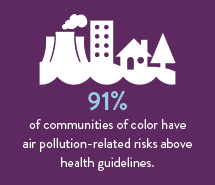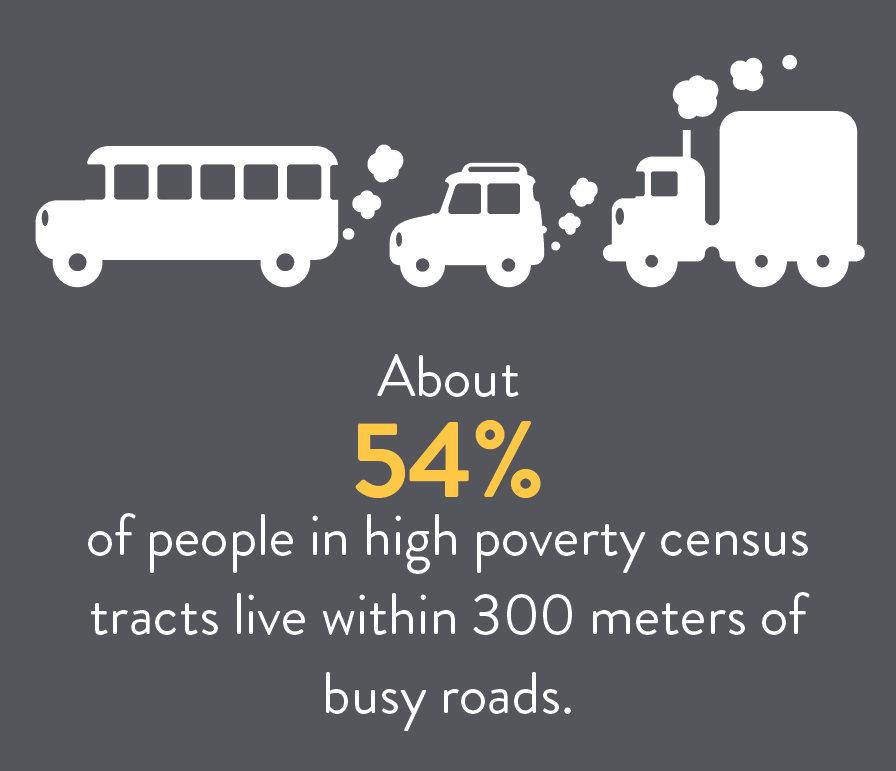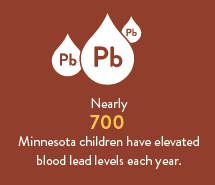Environmental Justice
Environmental Justice
What is environmental justice?
Environmental justice is a state where all people, regardless of race, color, national origin, or income benefit from equal levels of environmental protections and have opportunities to participate in decisions that may affect their environment or health.
Policies, practices, and structures based on racism and discrimination have disproportionately exposed some populations to environmental hazards, creating injustices for these communities. For example, underserved communities are more likely to live near toxic waste sites, in areas with high air pollution from traffic and industries, and in low-quality housing due to discriminatory policies such as redlining and the historical placement of highways and hazardous facilities in these neighborhoods.


How is environmental justice related to health?
Unequal exposure to environmental hazards is related to negative health outcomes. In Minnesota, this is reflected as increased rates of asthma, infant mortality, and other environmental health outcomes among people of color, American Indian, rural, and low-income communities. These groups are also the most at-risk for experiencing the negative health effects from climate change, such as flooding and extreme heat events.
To ensure the health of all Minnesotans, everyone must have the opportunity to live in an environment with clean air, water, and land. Environmental justice involves working to ensure all Minnesotans not only have equal protection from environmental harms, but also have their voice represented in decision making with respect to the development, implementation, and enforcement of environmental laws, regulations, and policies.
Environmental justice is a key component to advancing health equity. Thus, the social determinants of health that are related to health equity are also important for understanding and advancing environmental justice. The social determinants of health include:
- Education
- Income
- Racial discrimination
- Transportation
- Housing
- Disability status
Learn more about health equity.


What indicators of environmental justice can I learn about here?
Explore the health topics below to see differences in environmental health outcomes by race/ethnicity, neighborhood or county, and poverty status.
- Health inequities in childhood asthma
- Health inequities in childhood lead exposure
- Childhood lead exposure
- Birth outcomes
- Poverty and income
What other data sources are available related to environmental justice?
There are many tools and data sources available related to environmental justice.
- What’s in My Neighborhood? is a Web-based map- and text-based search tool containing information on soil and groundwater contamination sites within the state; includes properties that have been investigated and cleaned up as well as properties that are currently enrolled in MPCA cleanup programs.
- Center for Earth Energy & Democracy (CEED) Twin Cities Environmental Justice Mapping Tool provides information about pollution and toxic risks in the Twin Cities. This tool lets you compare environmental risks across communities based on race and income and allows you to identify sources of pollution in your neighborhood.
- EJSCREEN (U.S. EPA) uses high-resolution maps combined with demographic and environmental data to identify places with potentially higher environmental burdens and vulnerable populations. EJSCREEN's color-coded maps, bar charts, and reports enable users to better understand areas in need of increased environmental protection, health care access, housing, infrastructure improvement, community revitalization, and climate resilience.
- Environmental Justice Dashboard (CDC) brings together data that are important to understand in order to achieve environmental justice, including data on environmental exposures, community characteristics, and health burden. Users can enter a county or zip code to view maps, infographics, and other data related to environmental justice at the local level.
- EnviroMapper for Envirofacts (U.S. EPA) is a powerful tool used to map various types of environmental information, including air releases, drinking water, toxic releases, hazardous wastes, water discharge permits, and Superfund sites. Users can select a geographic area within EnviroMapper and view the different facilities that are present within that area. EnviroMapper can be used to create maps at the national, state, and county levels, and link them to environmental text reports. Users can even insert dynamically created maps in their own Web pages.
For more information about environmental justice:
- Minnesota Pollution Control Agency - Environmental Justice
- Minnesota Center for Environmental Advocacy – Environmental Justice
- Mapping Prejudice – University of Minnesota
- U.S. EPA - Environmental justice
- CDC Environmental Public Health Tracking – Environmental Justice
- CDC Environmental Justice data dashboard
- National Institute of Environmental Health Sciences – Environmental Health Disparities and Environmental Justice
- NAACP - Environmental and Climate Justice
Last updated: November 2021